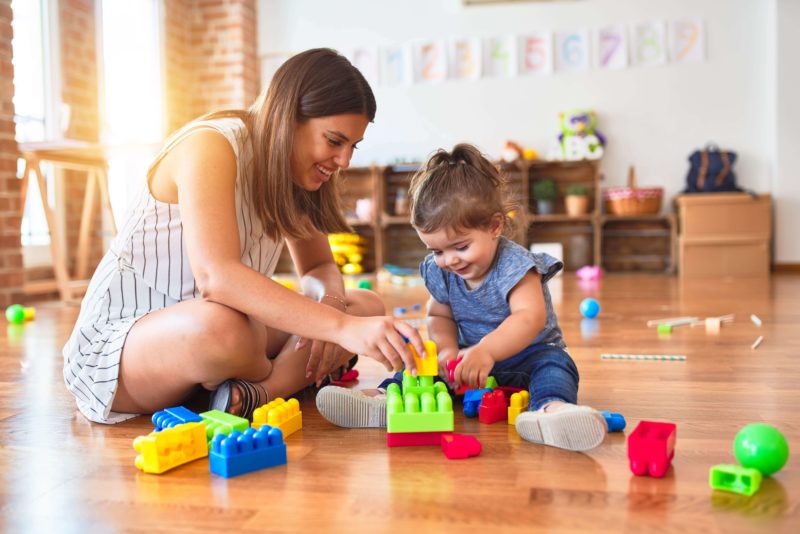What are primitive reflexes?
Primitive reflexes are the first reflexes for our development. They are involuntary movement patterns that assist with survival in early childhood. These reflexes are usually naturally integrated in the first three years of life. However, they can be retained and might cause developmental delays and dysfunction.
What are the causes for retained primitive reflexes?
There are many causes for retained primitive reflexes, including:
- Traumatic birth
- C section
- Use of drugs and alcohol during pregnancy
- Constant ear infections in early childhood
- Insufficient tummy time
- Skipping, crawling
How can I observe primitive reflexes in my child?
There are many different primitive reflexes. Although Occupational Therapists usually work with five of them:
- Moro Reflex
- Asymmetrical Tonic Neck Reflex (ATNR)
- Tonic Labyrinthine Reflex (TLR)
- Spinal Galant Reflex
- Symmetrical Tonic Neck Reflex (STNR).
Moro Reflex
The Moro Reflex is the baby’s automatic reaction to sudden sensory stimulation, such as bright light, change in temperature, touch, and others. You have probably observed it in your baby with a movement in which the baby throws back their head, extends out their arms and legs, cries, then pulls the arms and legs back in. This reflex should disappear between 2-4 months of age. Older kids with retained Moro Reflex might present with:
- Hypersensitivity to light, movement, sound, touch, and smell
- Motion sickness
- Attention difficulties
- Impulse control difficulties
- Aggressive behaviours
- Allergies
- Asthma
- Poor Balance-Difficulties playing ball games
Asymmetrical Tonic Neck Reflex (ATNR)
The ATNR is also known as the defensor position. It prepares the baby for future transitional movements like rolling, crossing midline, and hand-eye coordination. You can observe it in your baby when they lie down on their back and turn their head to one side. Their arm and leg on the same side they are looking towards will extend, and the opposite side will flex. This reflex should be gone between 4-6 months of age. Older kids with retained ATNR might present with:
- Handwriting difficulties
- Reading difficulties
- Lack of sense of direction
- Hand Dominance confusion
- Focus and balance difficulties
Tonic Labyrinthine Reflex (TLR)
The TLR assists the development of neck and head control and prepares the baby for rolling, crawling, standing and walking. The best way to observe the TLR in your baby is during tummy time. When the baby looks up, their arms and legs will extend. If the baby looks down, their arms and legs will flex towards their body. This reflex must be integrated between 3-5 years. Older kids with retained TLR might present with:
- Difficulties crawling
- Poor posture control
- Balance difficulties
- Motion sickness
- Toe walk
- Lack of spatial awareness
- Lack of interest in sports
Spinal Galant Reflex
The primary function of the Spinal Galant Reflex is to support the baby during birth, giving the baby hips movement to go through the birth canal. After delivery, it helps developing hearing and auditory processing and is still supporting hip movements. You can observe this reflex in your baby by positioning them in a prone position (facing down) on your arms and stroking your index finger along one side of the spine. The reflex will present with the baby laterally flexing his hips towards the stimulated side. This reflex should integrate between 3 and 9 months after birth. Older kids with retained Spinal Galant reflex might present with:
- Difficulties with bladder control
- Poor attention and concentration
- Difficulties sitting still
- Back pain
- Avoidance of wearing tight clothes
Symmetrical Tonic Neck Reflex (STNR)
The STNR is also known as the crawling reflex. It supports the baby in building gross motor coordination skills, such as separating arm and leg movements, developing balance, and controlling sitting posture. You can observe this reflex in your baby when they move their head in a crawling position. If you gently flex their neck (move their head down), their upper body will bend, and their lower body will stretch. If you gently extend their neck (move their head up), their upper body will elongate, and their lower body will flex. This reflex should integrate between 9 and 11 months. Older kids with retained STNR might present with:
- No crawling
- W sitting
- Difficulties copying activities from the board
- Toe walking
- Difficulties with ball skills
- Difficulties with eye-hand coordination
How can I help my child integrating the primitive reflexes?
If you think your child might have retained primitive reflexes, talk to your Paediatrician or Occupational Therapist. In the meantime, you can try some of the strategies below:
- Activities when lying on the stomach including watching TV, drawing, colouring, and playing board games.
- Exercises when sitting on a therapy ball
- Crawling through tunnels
- Obstacle courses
- Wheelbarrow walk
- Cat/cow yoga pose
- Superman pose lying down in a prone position
- Star jumps
- Throwing a ball on a target
- Roll down a ramp or a mountain of cushions
Should your child present any of the above symptoms of retained primitive reflexes, please, do not panic. In some cases, there are underlying conditions that lead to similar characteristics. Retained primitive reflexes can be assessed and treated by an Occupational Therapist who will work with you and your child to achieve successful integration.
If you have any questions about the content in this article or would like to talk to someone at Helping Children Occupational Therapy, please contact us as we are happy to assist.


